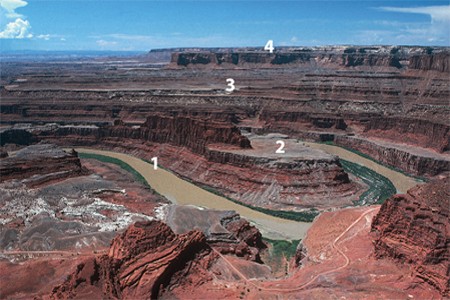Which sequence of numbers reflects the order in which the layers were deposited?
A. 4, 3, 1, 2
B. 1, 2, 3, 4
C. 1, 3, 4, 2
D. 4, 3, 2, 1
E. None of these.
Answer: B
You might also like to view...
Which of the following statements regarding population density is TRUE?
A) crude population density will always be higher than physiological density B) agricultural density is rarely higher than crude population density in sub-Saharan Africa C) physiological density must be higher than crude population density D) crude population density is higher than agricultural density E) if the crude population density is low, the physiological density will be even lower
Compute the gradient of the outer base of the Okmok Caldera along line EF. Use the coastline closest to Point E as the starting point for measuring horizontal distance, and the northwest rim of the caldera as the stopping point. It may be easiest to use the graphic map scale to measure out a distance of four or five miles, and then determine the elevation change over that distance.
The following questions are based on Map T-2, the “Umnak, Alaska,” topographic map (scale 1:250,000; contour interval 200 feet). In this problem, you will estimate the height of the original Okmok volcano before the caldera was formed. (You may also determine the elevation changes and distances needed to make these calculations by using Google Earth™.)
Gradients can be used to estimate an elevation increase over a given distance. (See Exercise 34 for a review of gradients.) For example, if a mountain has a gradient of 1000 feet per mile, we can estimate that over a horizontal distance of five miles, the elevation will increase by 5000 feet.
5 miles * 1000 ft>mi = 5000 foot elevation increase over five miles

Water, H2O, and methane, CH4 have about the same mass and differ by only one type of atom. Why is the boiling point of water so much higher than that of methane?
A) The water molecule is less symmetrical than is the methane molecule. B) The oxygen of a water molecule has two lone pairs of electrons. C) The electronegativity difference between oxygen and hydrogen is greater than the electronegativity difference between carbon and hydrogen. D) all of the above
In general, warm ocean currents are located ________ of the continents
A) east B) west C) equatorward D) poleward E) south